#American Black Duck
Text
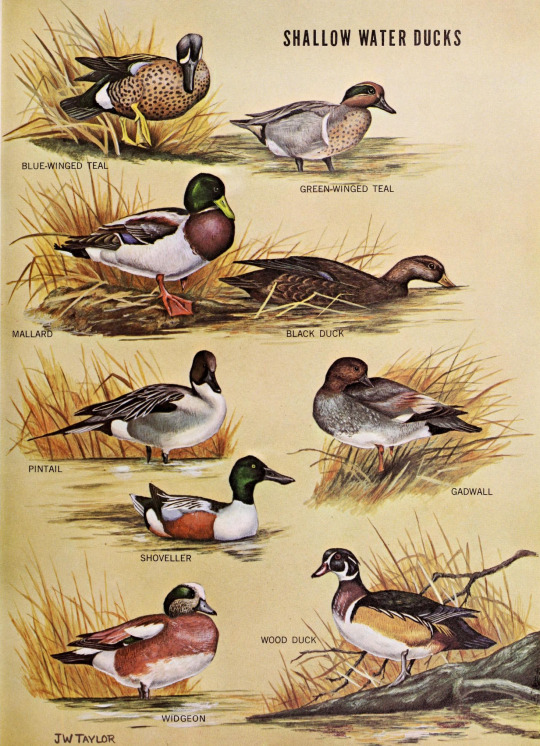
Virginia Wildlife; vol. 31, no. 11. November, 1970. Illustration by John W. Taylor.
Internet Archive
#birds#waterfowl#ducks#blue-winged teal#green-winged teal#mallards#american black duck#northern pintail#northern shoveler#gadwall#american wigeon#wood duck#John W. Taylor
308 notes
·
View notes
Text

American Black Duck
Brooklyn Bridge Park, Pier 1
#birds#birding#urban birding#nuts_about_birds#birdstagram#patch birding#nature blogger#nyc nature#brooklyn#brooklyn bridge park#nyc#nature#ducks#ducksofinstagram#ducks of tumblr#duckstagram#american black duck
90 notes
·
View notes
Text

American black duck, male . . . Bombay Hook National Wildlife Refuge, Smyrna, Delaware . . . 12/15/23
21 notes
·
View notes
Text
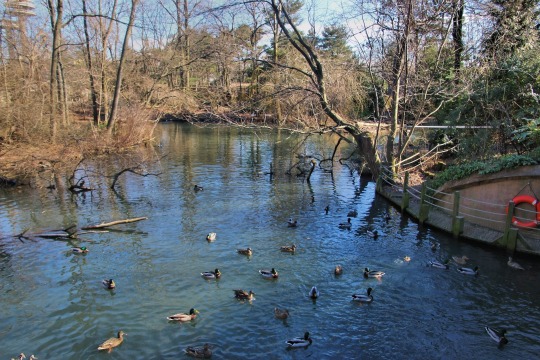


Waterfowl Marsh - Queens Zoo
#Marsh Ducks#American Black Duck#Duck#Ducklings#Waterfowl Marsh#Tree#Shrub#Wildlife#Zoo#Cute Animals#Sunlight#Queens Zoo#Flushing Meadows#Corona Park#Queens#New York City#New York
9 notes
·
View notes
Text

american black ducks at prospect park, new york
8 notes
·
View notes
Text
Round 2 match 1A


The American Black Duck, compared with many closely related species such as the Mallard, has relatively little sexual dimorphism, which means that males and females of the species look very similar. They can be distinguished by bill colour, however, as males have a yellow bill while female's bills are more of an olive green.
The Black Scoter is a sea duck, which means it spends much of its time in ocean waters, and can be found in the winter along both the Pacific and Atlantic coasts. This does not, however, mean that they avoid freshwater entirely. They often make their nests near freshwater, and some birds even winter on the Great Lakes.
9 notes
·
View notes
Text

[171/10,977] American Black Duck - Anas rubripes
Order: Anseriformes
Family: Anatidae (ducks, geese and swans)
Subfamily: Anatinae (dabbling ducks)
Photo credit: August Davidson-Onsgard via Macaulay Library
5 notes
·
View notes
Text
Close Pair

American Black Duck
#original photographers#original photographers on tumblr#photography#nature#photographers on tumblr#wildlife#duck#nature photography#american black duck#waterfowl#water
4 notes
·
View notes
Text
creatures

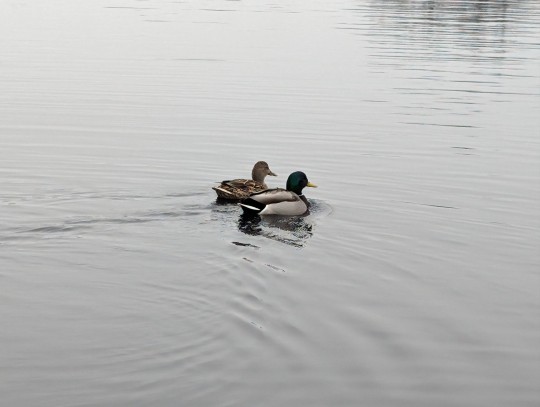







#peter prattles#from today and yesterday#it's foggy so there's not too many animals out today#also wade they've been saluted. since their ancestors fought in the war#*wade;#there's no comma but pretend that's a comma#birds#photography#that one photo of the squirrel is very vibrant#common wild goose#canada goose#european starling#american black duck#mallard#and those little ones ?#uhh#Italian sparrow#or#house sparrow#yay
0 notes
Text
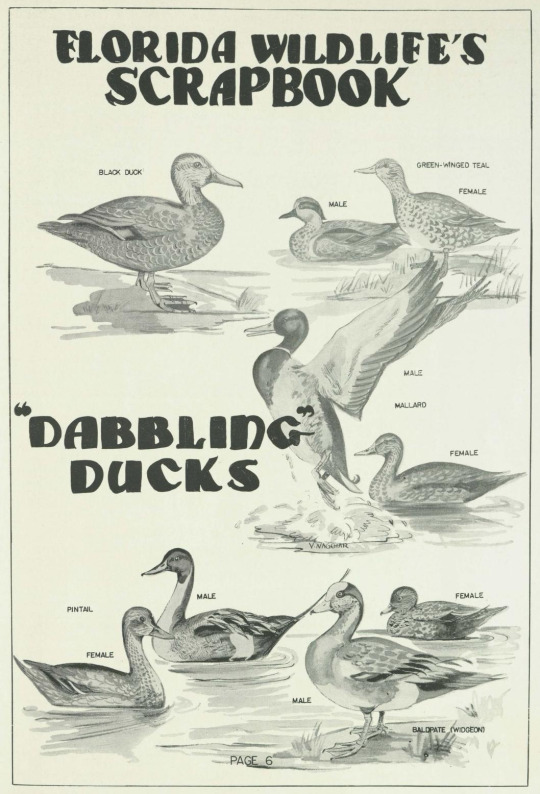
Florida Wildlife; vol. 9, no. 5. October 1955.
Internet Archive
110 notes
·
View notes
Text

American Black Duck
Brooklyn Bridge Park, Pier 4 Bird Island
#birds#birding#urban birding#nuts_about_birds#birdstagram#patch birding#nature blogger#nyc nature#brooklyn#brooklyn bridge park#nyc#nature#ducks#duckstagram#american black duck
146 notes
·
View notes
Text
Last weekend I was planning to drive out to the west side to pick up a load of birdseed. My coworker had told me that he was out at Tiedeman's Pond the other day, and I said to myself, "I bet there's ducks on that pond. I better go check." So I grabbed my camera bag on the way out the door. And folks? There were ducks.

[ID: A male Wood Duck swims on a pond of rippling blue water from left to right. The duck is presenting his entire profile to the camera, from glossy green head to dark tail tip. He has a brown body, more burgundy at the breast, with finely scaled tan and gray flanks and just a hint of teal peeking through on the wing. Each color patch is bordered with a brilliant white stripe, including a lovely pattern on the face and head. His head feathers are swept back in a longish crest that looks black except for the iridescent green where the sun has caught it. This contrasts with a striking bill in orange gradients with a white patch on top and black tip. His eye is a bold fire engine red. End ID]
I was surprised to find multiple pairs of Wood Ducks very close to the edge of the pond, because these guys will usually fly at the first sign of a human in the area. I can only assume they were desensitized by the frequent groups of walkers out with their kids and their dogs.
There were lots of other ducks to be seen: Lesser Scaups, Hooded Mergansers, Buffleheads, Ruddy Ducks, Mallards. But most of these were way out at the center of the pond and not interested in being photographed. The only exception being a small group of Ring-necked Ducks that were diving for food near the cattails.

[ID: A male Ring-necked Duck swims from right to left on the pond. It is glossy black, with light gray flanks fading to white towards the front. His bill is medium gray in the middle, black on the tip, with a bright white border around the edges, circling the nostrils, and separating gray from black. His eye is yellow orange. His feathers are beaded with water droplets from diving for food. End ID]
But it wasn't just ducks on offer that day! Spring means birds migrating back from the south and hungry from the long flight. I got to watch a pair of Great Blue Herons show up and immediately begin hunting.

[ID: A Great Blue Heron is standing in a pond, with a freshly-caught goldfish in its bill. The Heron is standing with its legs completely submerged in the water, with its long neck coiled back as it pulls up the large goldfish. The Heron is several feet tall, mostly gray, with white on their head and a dark blue cap with long trailing feathers at the back. The goldfish is at least eight inches long, and the Heron appears to have speared it on their long upper mandible, which glows orange from the bright sunlight filtering through from behind. End ID]
I was very happy to see that the Herons were doing their part to control the non-native fish population. This one had speared a very large goldfish, and had to think a minute about how to eat it. They dropped the goldfish back in the water only to recapture it for swallowing head-first. Their partner looked on from a short distance away, not having found anything while I was there.

[ID: A second Great Blue Heron slowly wades by, hunting in the shallow part of the pond. This one shows a flash of dark-blue tail feathers, and the direct sunlight offers a nice view of their bright yellow dagger of a bill and their pale yellow eye rimmed in baby blue skin. End ID]
And it wasn't just water birds that were attracted to the awakening pond. This American Crow flew down to the edge to see what small morsels might be crawling around in the mud.

[ID: An American Crow stands at the edge of the pond. The Crow is facing away from the camera, with the sunlight glinting off their glossy black feathers. They are looking toward the camera in profile, showing one brown eye and a chunky black bill. End ID]
The Black-capped Chickadees were out too. This pair had found a nice little tree cavity, and they may have been excavating it further to use as a nest.

[ID: A Black-capped Chickadee peeks out from a tree hollow, holding a small bit of something in their bill. They are just a couple inches tall, with a gray and tan body, and a predominantly black head. They have white cheeks that start at the small black bill and extend back to the neck. They are staring inquisitively at the camera, with little bits of what looks like wood stuck to their face. End ID]
The two Chickadees seemed to be working in shifts, one keeping watch outside while the other one went in to prep the house. I wonder how many generations of birds have grown up in that little knothole...
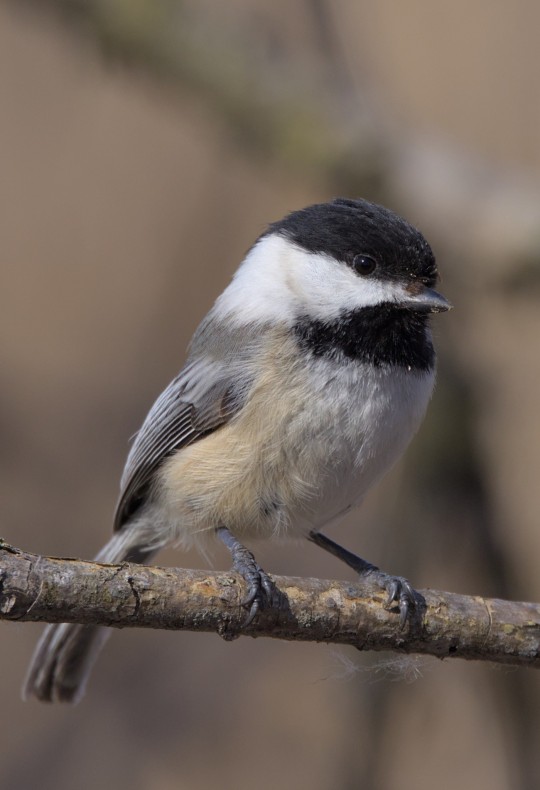
[ID: A second Black-capped Chickadee perches on a thin branch with delicate feet. They are sitting very still, keeping watch while their partner works in a nearby tree cavity. There are a few tiny flecks of what might be wood on their face. End ID]
Though, the bird that gave me the most excitement on this walk was a new one. My partner teases me, saying that I have to check every seagull to see whether they're a Herring or a Ring-billed. But on this day I had found a Bonaparte's Gull!

[ID: A Bonaparte's Gull floats out in the middle of the pond. The Gull is white with light gray wings and black wingtips. Their head is mostly gray with patches of white, possibly because they're in the middle of molting to grow their breeding plumage. End ID]
The Gull was hanging out with a nice flock of Lesser Scaups, and I knew I had a lifer in my binoculars as soon as I saw that gray head. Every so often it would take off and fly around the pond, looking for tasty fish to snatch from the surface. They never wandered all that close to me, but I got a few nice shots of those wings.
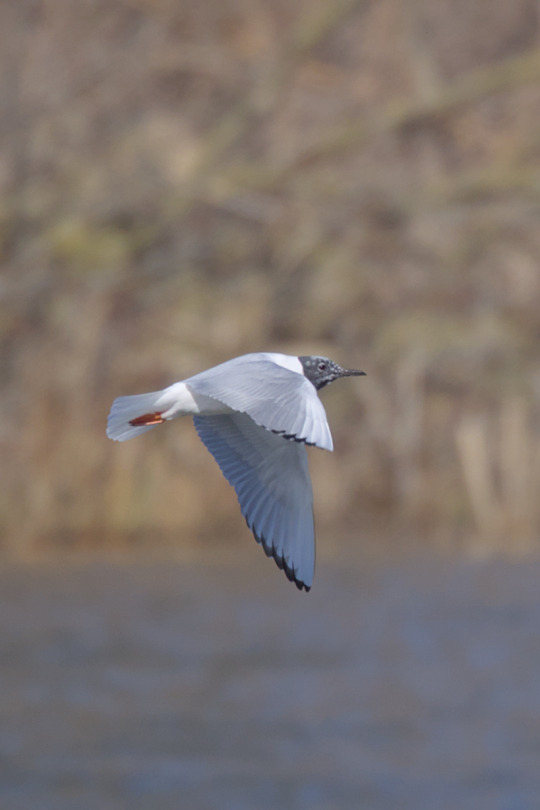
[ID: The Bonaparte's Gull flies low over the pond, on the hunt for small fish. With wings fully extended, it is apparent that the black wingtips are just a thin crescent at the tip of each primary flight feathers. The Gull is in the middle of a down stroke, head forward, orange feet tucked neatly beneath fanned gray tail. End ID]
For only visiting on a whim, this was a very productive walk. I saw 35 bird species, seven for the first time this year, and one for the first time ever. I suppose that's why birders wait all year for spring migration to start.
#bird#bird photography#birding#photography#birds#birdblr#birdlife#birdwatching#original photography#original photography on tumblr#duck#heron#gull#wood duck#ring-necked duck#great blue heron#american crow#black capped chickadee#bonaparte's gull#lifer
26 notes
·
View notes
Video
5.2-1 by Henry
Via Flickr:
Black crown night heron
#American Coot#bird#Birds#Green Heron#Black crown night heron#solitary snipe#Hawk#Cooper’s hawk#Mallard#duck#Black phoebe#Canon#Nature#flickr
18 notes
·
View notes
Text



Waterfowl Marsh - Queens Zoo
#Marsh Ducks#American Black Duck#Duck#Ducklings#Waterfowl Marsh#Wildlife#Zoo#Cute Animals#Sunlight#Tree#Shrub#Queens Zoo#Flushing Meadows#Corona Park#Queens#New York City#New York
8 notes
·
View notes
Text
BOTD: Black-bellied Whistling Duck

Photo: Mick Thompson
"A spectacularly marked, sociable, noisy waterfowl. Often rests on low snags above water, and may perch high in dead trees. In North America found mostly near Mexican border, but has increased in numbers recently, partly because it will use nest boxes put out for it. In some areas (such as coastal Texas), feeding of this species has become popular, with landowners tossing out corn near ponds to attract hundreds of whistling-ducks."
- Audubon Field Guide
#birds#black bellied whistling duck#birds of north america#north american birds#ducks#waterfowl#whistling ducks#birds of mexico#birds of central america#birds of the us#bird of the day#birding#birdblr#birblr#Dendrocygna autumnalis
33 notes
·
View notes
Text
Round 2 match 5B


The American Black Duck is slightly sexually dimorphic, which means that while females and males may look different, these differences are very subtle. The main difference is bill colour, with females having a dark olive green bill. They are very similar in appearance to female Mallards, however they are a much darker brown.
The Barnacle Goose is not sexually dimorphic, which means females and males look the same. They have a black neck and white face, with a black line in front of their eye which I think makes them look a little bit angry all the time. They breed in Greenland and are only occasionally seen in the US and Canada.
#american black duck#barnacle goose#ducks#geese#female duck poll#hens pens and geese#tumblr polls#round 2#tournament poll
6 notes
·
View notes
